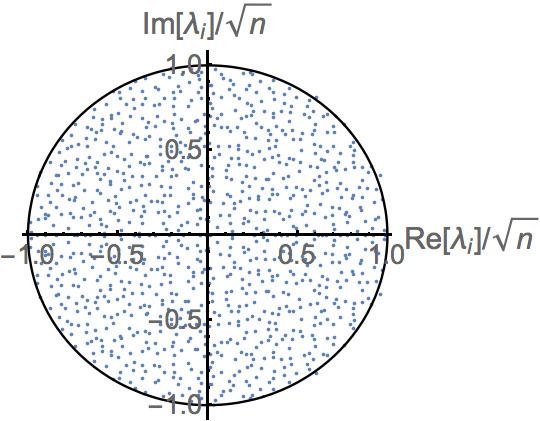 | ||
In probability theory, more specifically the study of random matrices, the circular law is the distribution of eigenvalues of an n × n random matrix with independent and identically distributed entries in the limit n → ∞.
Contents
It asserts that for any sequence of random n × n matrices whose entries are independent and identically distributed random variables, all with mean zero and variance equal to 1/n, the limiting spectral distribution is the uniform distribution over the unit disc.
Precise statement
Let
With these definitions in mind, the circular law asserts the sequence of measures
History
For random matrices with Gaussian distribution of entries (the Ginibre ensembles), the circular law was established in the 1960s by Jean Ginibre. In the 1980s, Vyacheslav Girko introduced an approach which allowed to establish the circular law for more general distributions. Further progress was made by Zhidong Bai, who established the circular law under certain smoothness assumptions on the distribution.
The assumptions were further relaxed in the works of Terence Tao and Van H. Vu, Friedrich Götze and Alexander Tikhomirov. Finally, in 2010 Tao and Vu proved the circular law under the minimal assumptions stated above.
